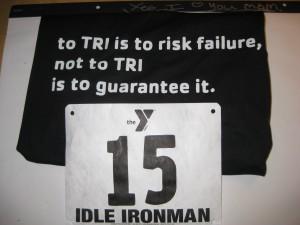When Habit Isn’t Enough: How to Boost Productivity By Rochelle Melander
As you may have read last week, I’ve signed up for the Idle Ironman at my Y. In the next month, I’ll bike 112 miles, run 26.2 miles, and—since I don’t swim—run an extra seven miles.
The first year I did the Idle Ironman, I started a week late. But I figured it’d be easy: I already had a habit of getting to the gym every day. Ha! On March 31, I pedaled like a crazy woman to finish my miles. (I did finish, but it was painful!)
This year, I’m doing everything I can to finish early (or at least on time). Last week, as I added up my miles, I had a big aha moment (or maybe it was a duh! moment): I can’t rely on my exercise habit to get me across the finish line. If I just do what I normally do, I won’t finish the Idle Ironman. I won’t even come close. I have to put in more: more minutes, more miles and more effort.
When it comes to doing anything big—writing a book, running a marathon, or starting a business, your good habits will only take you so far. When I’m working on a book, I know that I can’t rely on my daily writing routine and expect to finish. I need to put in more time.
But how?
Recently, I came across this wonderful quote in Anne Truitt’s Daybook, the first of her three memoirs about her life as an artist.
“Before I went to sleep, I loosely organized the following day’s schedule—loosely because there were, of course, always unexpected events. … The periods left over from my practical responsibilities were spent in the studio. If there were fifteen minutes between shopping and carpool, I used them. If I had an hour, or two hours, I rejoiced, but didn’t even waste time feeling happy, just worked.” Anne Truitt, p. 126, Daybook
The takeaway? In addition to forming a writing habit—a set time you work on your craft each day—you can increase productivity in two ways:
1. Plan ahead. Every night, look over the next day’s schedule. After slotting in your regular writing time and other work and life tasks, assign one or more of your leftover periods to writing.
2. Create a plan for the in-betweens. When I read this passage, I was struck by Truitt’s statement: If there were fifteen minutes between shopping and carpool, I used them. Why not? Make a list of little bits you need to do for your book—small pieces of revision, research, reading, querying, or writing—and use the in-between times to tackle them.
Your turn: How do you increase your writing time when you’ve got a big project?









